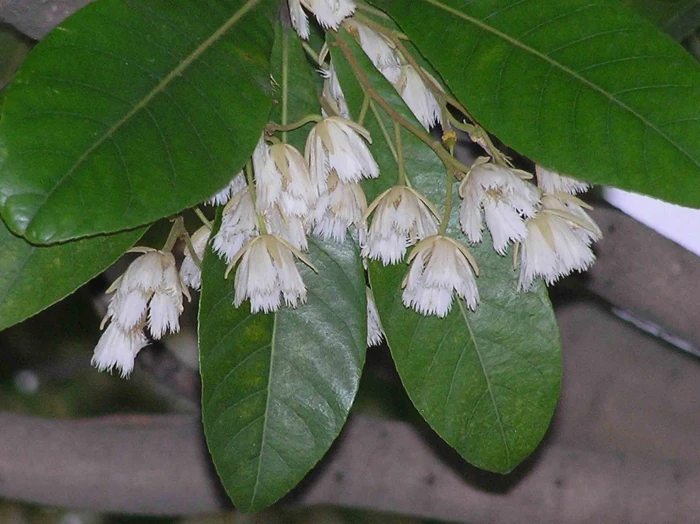Japanese Blueberry Tree
(Elaeocarpus decipiens)
Japanese Blueberry Tree (Elaeocarpus decipiens)
/
/

阿橋 HQ
CC BY-SA 2.0
Image By:
阿橋 HQ
Recorded By:
Copyright:
CC BY-SA 2.0
Copyright Notice:
Photo by: 阿橋 HQ | License Type: CC BY-SA 2.0 | License URL: https://creativecommons.org/licenses/by-sa/2.0 | Uploader: Rudolphous | Publisher: Wikimedia Commons | Title: 杜英_Elaeocarpus_decipiens_-香港濕地公園_Hong_Kong_Wetland_Park-_(9227094747).jpg | Notes: {{Information |Description={{en|1=Unidentified variety of Equisetum, or horsetail, a bright green bamboo-like plant often used in landscaping. Possibly Equisetum hyemale.}} |Source={{own}} |Author=[[User:Downtowngal|Downtow


















Estimated Native Range
Climate Requirements for Spring, Texas
| This Plant | Your Site | Plant Suitability for Your Location | ||
|---|---|---|---|---|
| • Precipitation | 14" - 152" | 46" | Aquatic | Aquatic |
| • High Temp. | 68°F - 94°F | 94°F | Your summer temperatures are normal for this plant. | Excellent |
| • Low Temp. | 8°F - 66°F | 41°F | Your winter temperatures are normal for this plant | Excellent |
This plant should grow well at your location with about N inches per year (Y minutes per month) of irrigation.
Summary
Elaeocarpus decipiens, commonly known as Japanese Blueberry Tree, is an evergreen tree native to East Asia, particularly found in open woodlands and forest edges. It typically grows to a height of 30-40 feet (9-12 meters) and a width of 15-30 feet (5-9 meters), with a dense, rounded to conical form. The tree is notable for its glossy, dark green leaves that turn a striking red or purple in colder months before they drop, and for its small, inconspicuous cream, pink, and white flowers that bloom in the summer. The flowers are followed by olive-like fruits that mature to a dark, bluish-black color.
The Japanese Blueberry Tree is valued for its year-round foliage interest, particularly its colorful leaf change in the fall and winter. It is used in urban landscapes, as a specimen tree, or for screening purposes due to its dense growth habit. It adapts well to a range of soil types, provided they have medium drainage, and it can tolerate both full sun and part shade. While it can manage with low water once established, medium water will support more vigorous growth. Gardeners should be aware that the fruit can create a mess when it drops, and the tree may suffer from leaf spot or rust diseases under certain conditions.CC BY-SA 4.0
The Japanese Blueberry Tree is valued for its year-round foliage interest, particularly its colorful leaf change in the fall and winter. It is used in urban landscapes, as a specimen tree, or for screening purposes due to its dense growth habit. It adapts well to a range of soil types, provided they have medium drainage, and it can tolerate both full sun and part shade. While it can manage with low water once established, medium water will support more vigorous growth. Gardeners should be aware that the fruit can create a mess when it drops, and the tree may suffer from leaf spot or rust diseases under certain conditions.CC BY-SA 4.0
Plant Description
- Plant Type: Tree
- Height: 30-40 feet
- Width: 15-30 feet
- Growth Rate: Moderate
- Flower Color: Cream, White
- Flowering Season: Spring, Summer
- Leaf Retention: Evergreen
Growth Requirements
- Sun: Full Sun, Part Shade
- Water: Low, Medium
- Drainage: Medium
Common Uses
Bee Garden, Bird Garden, Butterfly Garden, Fragrant, Hedges, Low Maintenance, Potted Plant, Street Planting
Natural Habitat
Open woodlands and forest edges in East Asia
Other Names
Common Names:
Scientific Names: Elaeocarpus decipiens, Elaeocarpus hayatae, Elaeocarpus sphaericus var. hayatae, Elaeocarpus angustifolius var. hayatae, Elaeocarpus sylvestris subsp. sylvestris, Elaeocarpus sylvestris var. hayatae
GBIF Accepted Name: Elaeocarpus decipiens Hemsl.